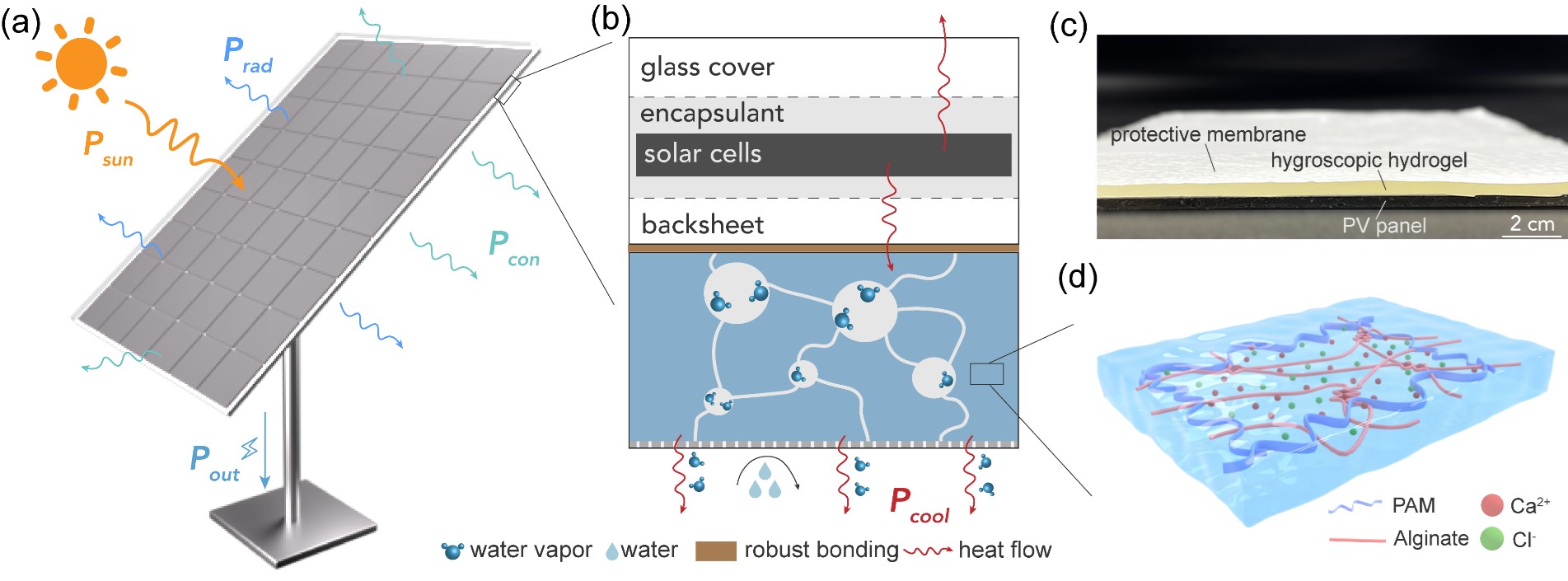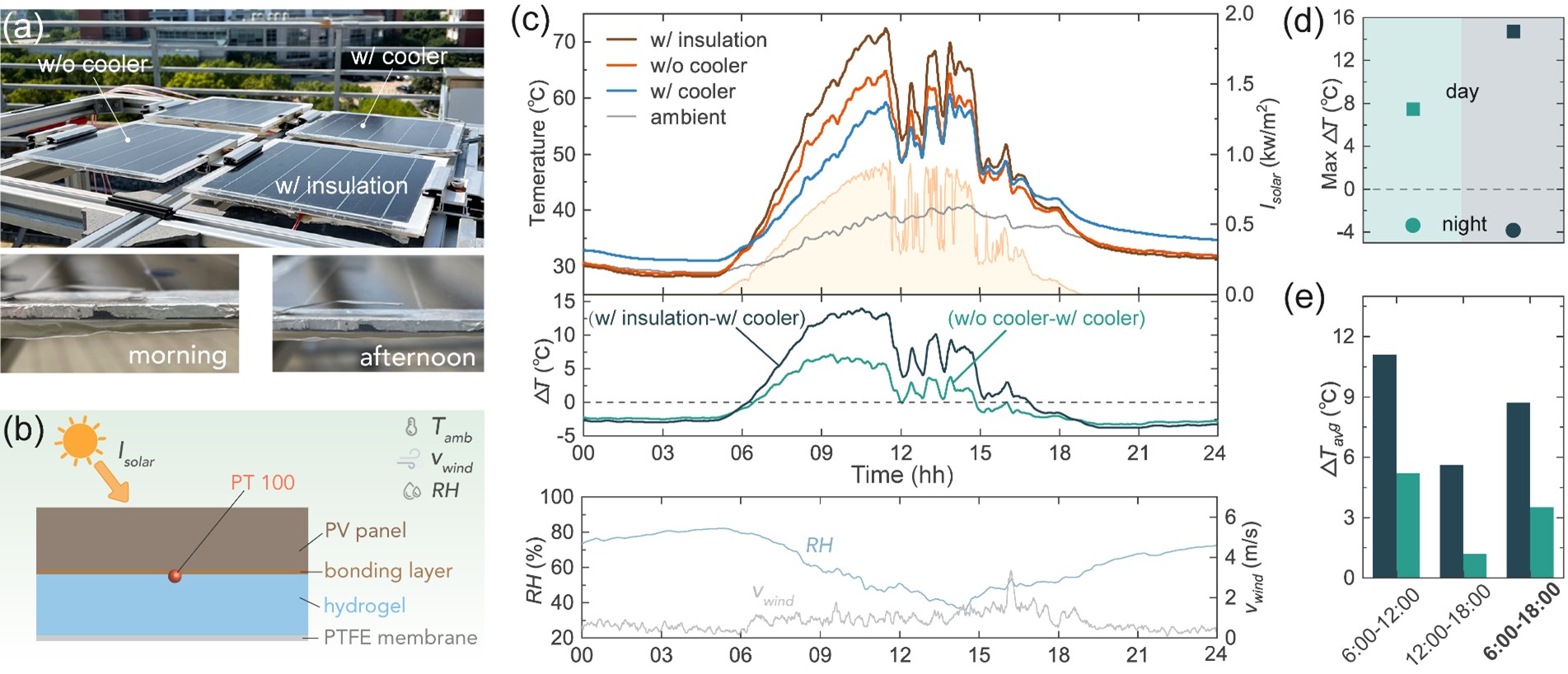
News

News
Recently, Dr. Tao Ma’s research group from School of Mechanical Engineering published a paper entitled "A Hygroscopic Composite Backplate Enabling Passive Cooling of Photovoltaic Panels" in ACS Energy Letters (IF=23.99). The research team developed a lightweight composite backplate for passive cooling of photovoltaic (PV) panels based on hygroscopic hydrogels, which enable adsorption-evaporation cooling. The research team also developed a bottom waterproof and breathable membrane, which can avoid the failure of the moisture-absorbing function of the hydrogel under outdoor conditions. Besides, a tough bonding method was proposed between the hydrogel and the PV backsheet, further improving the practicality and reliability. The first author of the paper is Mr. Zhenpeng Li, a PhD candidate, and the corresponding author is Associate Professor Dr Tao Ma.

illustration of a hygroscopic composite backplate for passive cooling of PV panels
Generally, solar PV panels convert about 20% of solar radiation into electrical power, but meanwhile, about 70% of solar energy is converted into waste heat, resulting in temperature rising. The high working temperature not only reduces the power generation of PV panels, but also accelerates the aging and thus affects their lifetime. In this work, a tough hygroscopic hydrogel was developed to adsorb water vapor from atmosphere at night, and the stored water becomes a cooling medium during the day to remove the heat of PV panels through water evaporation. Based on the hygroscopic hydrogel, the composite backsheet can achieve continuous passive cooling effect without any metal parts or a large amount of cooling medium. In outdoor experiments, the composite backsheet demonstrated stable cooling performance during continuous observation, with a temperature reduction of 7-15℃ compared to conventional panels. In addition, the increase in cost and of weight the composite backsheet is within 10% and 2.6 kg/m2, respectively. Therefore, this technology achieves low-cost, lightweight and passive cooling of PV panels, and facilitates benefiting from cooling PV panels attainable in practical engineering applications.

field tests of passive cooling performance
The research work was supported by the National Key R&D Program of China, the National Natural Science Foundation of China, and the Science and Technology Commission of Shanghai Municipality.
Paper link: https://pubs.acs.org/doi/10.1021/acsenergylett.3c00196

Shanghai Jiao Tong University
Address: 800 Dongchuan Road, Shanghai
200240